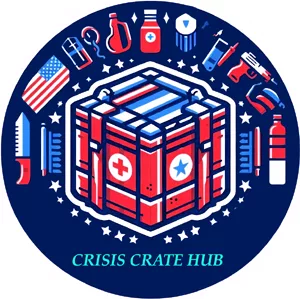Table of Contents
Survival gardening is about more than just putting seeds in the ground. It’s a skilled strategy to ensure food security and self-sufficiency when times get tough. In today’s unpredictable world, having a survival garden could be your ticket to peace of mind.
So, why exactly would you want a survival garden? Well, for starters, it gives you a steady food supply right in your backyard. You’ll get fresh produce without unnecessary trips to the store, which could be a game-changer during a crisis. Plus, these homegrown veggies aren’t just good for your belly; they’re packed with nutrients too!
When planning a survival garden, there are a few key elements you need to check out. It’s all about the location, folks. You want a spot that’s got decent sunlight and good soil quality. Don’t forget about the climate. Growing crops that thrive in your local weather means less hassle down the road.
Now, let’s talk crops that are worth planting in a survival scenario. Choose fruits, vegetables, and herbs that can grow under a variety of conditions. Think root veggies like carrots and potatoes, leafy greens like spinach, and hardy fruits like berries. These staples can keep you fueled and healthy if times get lean.
Step-by-Step Guide to Setting Up Your Survival Garden
Starting a survival garden doesn’t have to be rocket science; it’s about having a plan and sticking to it. The site you choose for your garden matters a lot. Look for a spot with plenty of sunlight and good drainage. Avoid shady or waterlogged areas. Mapping out a layout is next. Think rows and beds that fit your space while using crop rotation to keep the soil healthy.
Getting the soil right is like setting the stage for a great show. You need fertile ground for your plants to thrive. Test your soil to see what it’s working with, then amend it with compost, manure, or other organic matter to build some fertility.
Picking the right plants is crucial. You want varieties that’ll thrive in your specific environment and meet your feeding needs. Consider local weather patterns and prepare to adapt your garden choices to suit changing circumstances. It’s all about simple, reliable food sources.
Watering – seems simple, right? But efficient irrigation can make the difference between a thriving garden and a struggling one. Set up systems that reduce water waste while ensuring all plants get their due.
Keeping pests out and your plants healthy is another angle to tackle. Use barriers, friendly bugs, and safe, organic pesticides to keep your garden flourishing. Regular maintenance means fewer surprises and more food on your table.
Empowering Your Seed Arsenal: The Role of Seed Kits in Preparedness
When it comes to being prepared, seed kits can be your best friend. They’re a convenient way to ensure you’ve got a diverse range of crops ready to plant.
Picking the right seed kit means considering what’s in it. Look for kits that include non-GMO seeds with a mix of hearty and fast-growing varieties. Heirloom seeds are also a great choice if you’re into gardening with organically-grown crops.
Also: A lot of Emergency Food Supply kits that you order through survival and emergency preparedness retailers offer the choice of Hybrid as opposed to Non-Hybrid seeds. Here is a short rundown on the differences:
- Hybrid Seeds Defined: Hybrid seeds are created by cross-pollinating two different but closely related parent plants. This process combines desirable traits from both parents, such as improved yield, disease resistance, or better flavor.
- Seed Production: While hybrid seeds can produce plants that are robust and high-yielding, the seeds harvested from these hybrid plants typically do not produce offspring that are true to the parent plants. This means that if you plant seeds from a hybrid plant, the resulting plants may not have the same desirable traits as the original hybrid.
- Best Practices: For gardeners looking to save seeds, it’s often recommended to use heirloom seeds instead. Heirloom varieties are open-pollinated and will produce seeds that grow into plants similar to the parent.
In summary, while hybrid seeds can lead to excellent plants, they generally do not provide reliable new plantable seeds for future generations. If you’re interested in growing plants from saved seeds, heirloom varieties might be the way to go! 🌱
Proper seed storage is key to preserving those little powerhouses. Keep seeds in a cool, dry place, and consider using airtight containers. This will keep them viable until you’re ready to plant.
Building up a personal seed bank ensures ongoing garden productivity. Stockpile seeds from successful plants to ensure a cycle of growth and renewal, which turns your garden into a sustainable food source.
Seed sovereignty is a big idea that’s about knowing and controlling where your seed supply comes from. By saving and cultivating your own seeds, you gain independence and resilience in your gardening journey.
